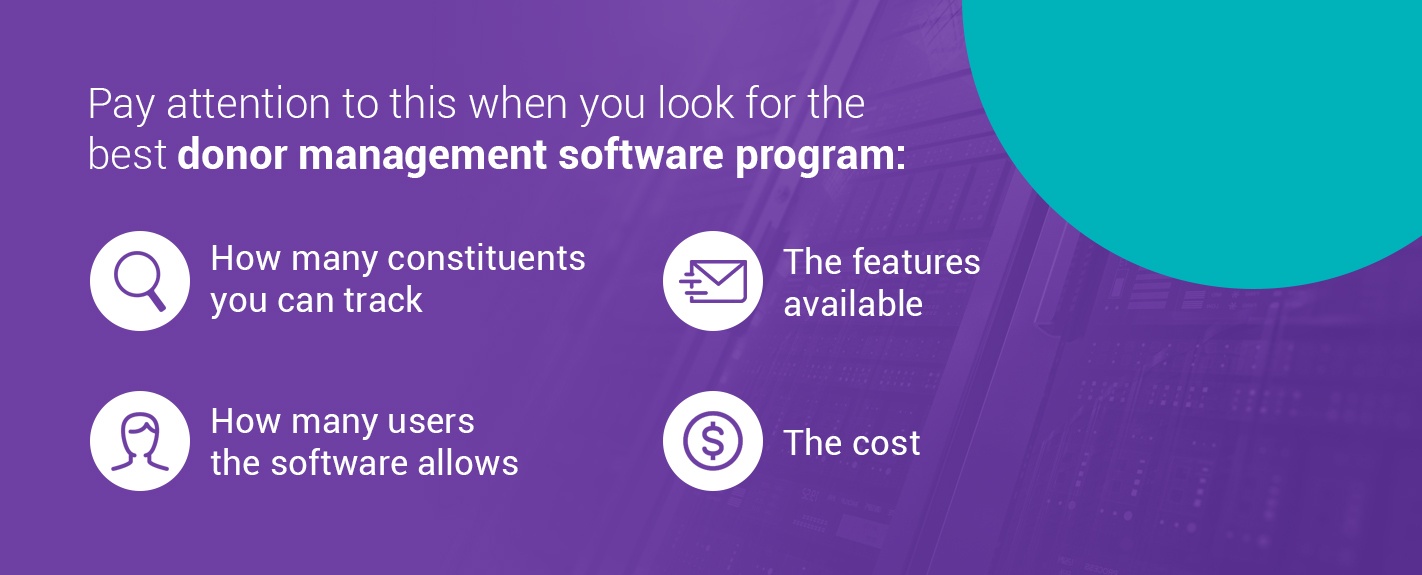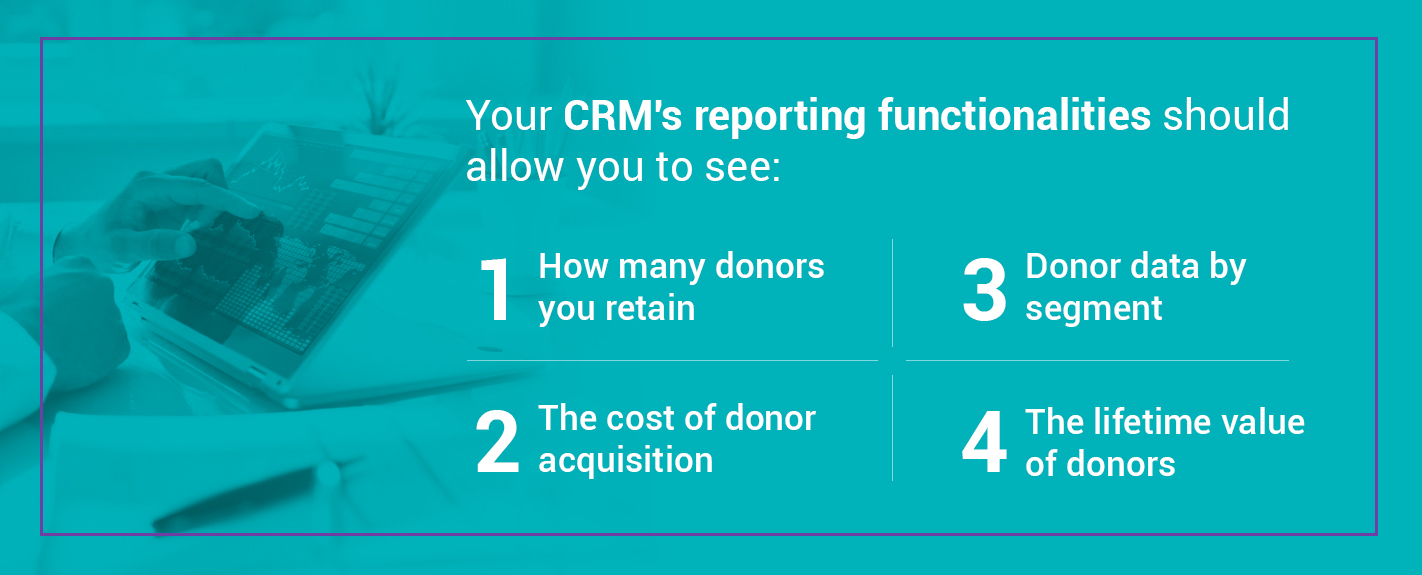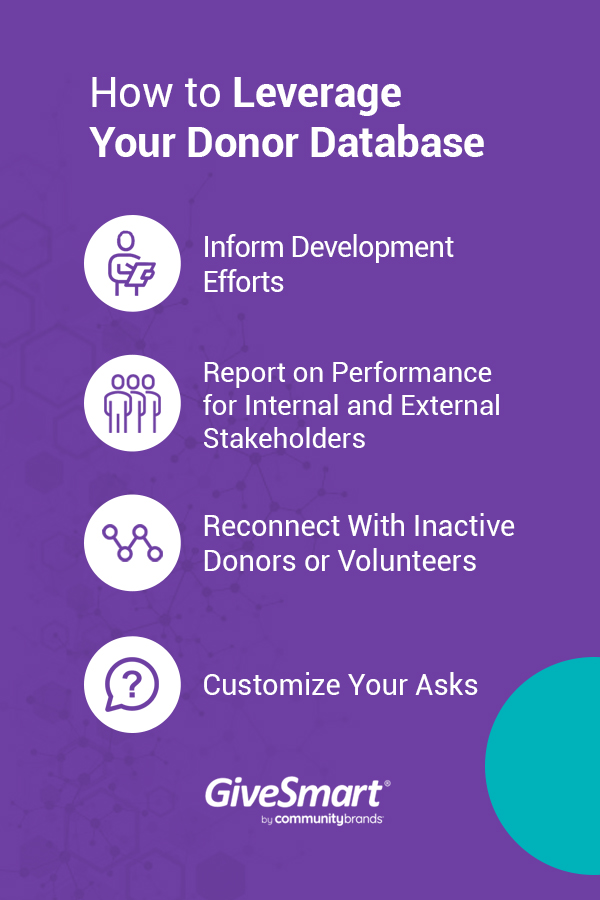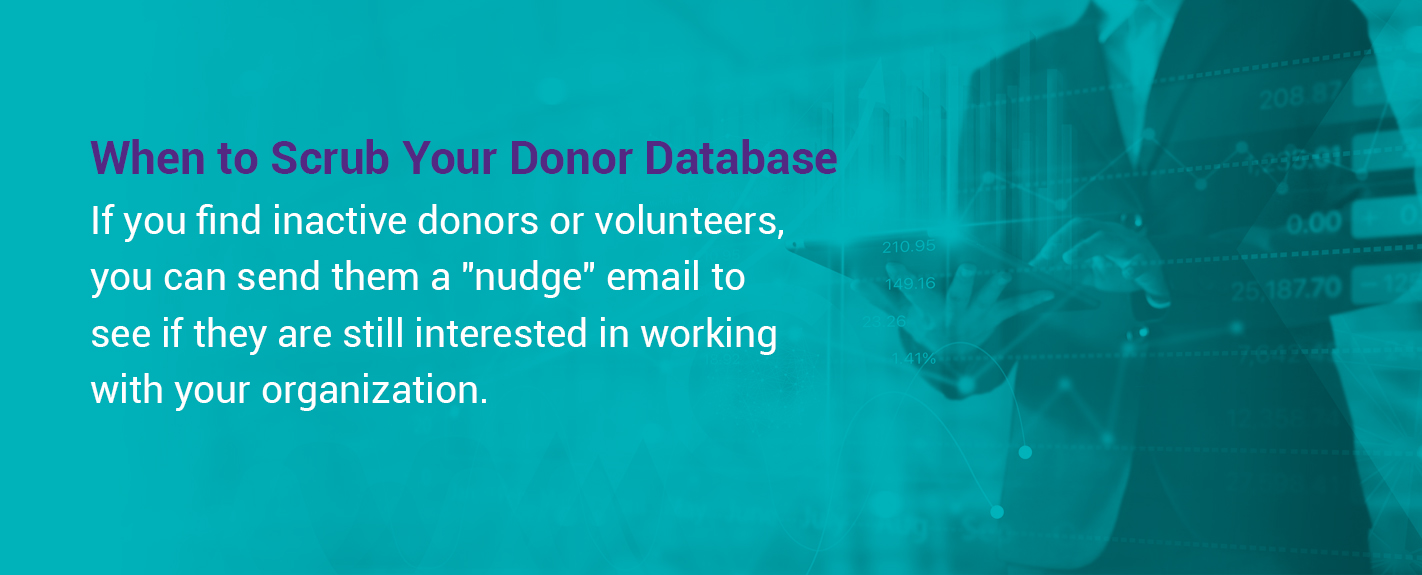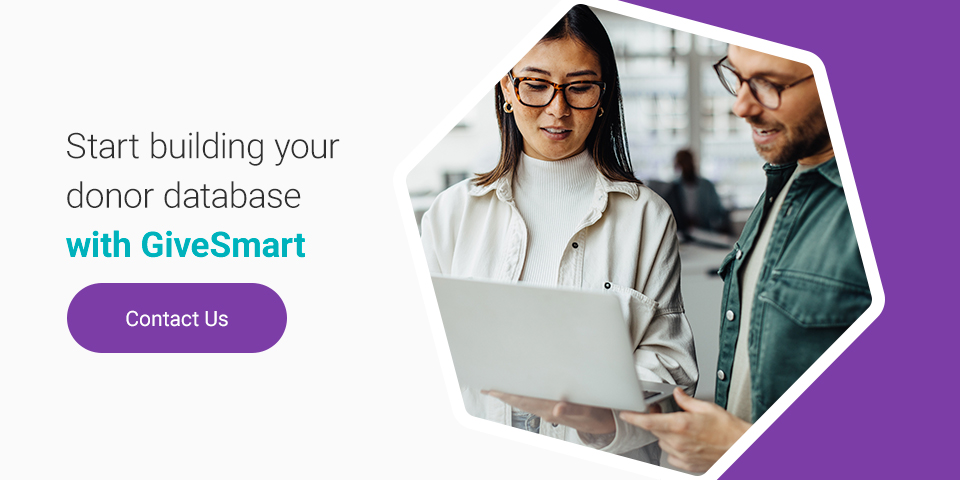Aug 6, 2019
How to Manage Your Donor Database
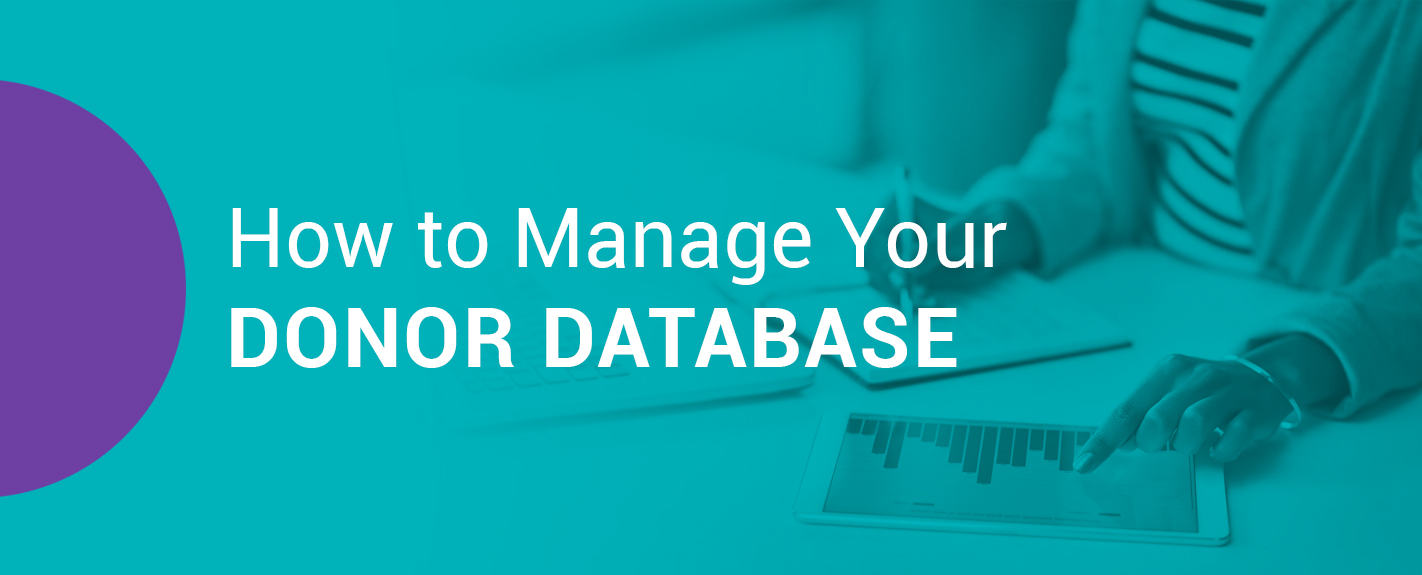
Charitable giving is on the rise. In 2021, people gave more than $484 billion to nonprofits, a 4% increase from 2020, adjusted for inflation. Although some donations came from organizations and businesses, the majority were from individual donors. Individuals accounted for almost 70% of all charitable contributions in 2021.
The Importance of Your Nonprofit’s Donor Management Database
Your donor data is crucial to understanding the nuances of your constituents and their behavior. Having a handle on this information leads to deeper donor connections and more data-driven decision-making.
Whether you’re managing or working for an established nonprofit organization or are building one from the ground up, you want to have a way of managing every single donor who gives you money. It doesn’t matter if a donor contributes $5 now and then or $100 or more monthly. Knowing who they are, where they live, and other pertinent details about them will help you better organize your fundraising efforts and bring in more money for your organization.
Building and maintaining a donor management database won’t just help you get your fundraising ducks in a row. It can also help you connect with donors who might have contributed a lot in the past but have recently reduced their giving. Knowing what’s fueling people’s desire to give — or influencing their decision not to give — can help you better understand the reputation of your organization.
Your donor database is only as good as the information you put into it. Here’s how to make the most of your organization’s donor management tools by building a database that allows you to maximize your donor relationships.
How to Build a Robust Donor Database for Nonprofits
The key to building a robust donor database is feeding it the right information. The more you know about the people who support your organization, the better you can target them and make appropriate fundraising requests. Knowing the details about your existing donors or constituents will help you figure out who to focus on when you’re trying to get more donors or when you’re trying to find new volunteers and supporters.
The first step in building a robust database is deciding what information to include for each donor. The next step is to standardize your method of data entry so that the information is as complete and accurate as possible. If you have been using multiple systems to track the same group of donors, you’re likely to find that you get better results by integrating all of your data into a single software solution.
1. Choose a constituent relationship management (CRM) program
Your donor database is only as strong as the CRM program you use to manage it. It’s relatively common for nonprofits to start out using multiple systems or even time-consuming manual spreadsheets to communicate with constituents. That’s especially true if you engage with a variety of people, such as volunteers, donors, corporate sponsors, and so on. While it might make sense to have separate programs for donors and volunteers or to keep information about individual donors separate from information about corporate donors, it can also lead to a lot of headaches and confusion.
It’s difficult to see any areas of overlap when you’re segmenting information. For example, you might have a group of volunteers who are also donors, but it can be difficult to discover that if they are siloed in separate donor and volunteer databases.
Others may rely on manual spreadsheets to track data, which create their own set of issues on top of data silos. These solutions are time-consuming to maintain and get more cumbersome as your donor base and the amount of information you capture grows.
For these reasons, it’s best to use a CRM program that gives you the big picture of who your organization engages with and what interaction each individual or corporation has with your nonprofit.
What should you look for in the best donor management software program? Here are a few things to pay attention to:
- How many constituents you can track: Consider the size of your donor and constituent base before choosing a program. Some programs are designed for smaller organizations and might not support massive numbers of constituents. It’s also worthwhile to note whether or not you can divide your constituents into categories, such as donors or volunteers.
- How many users the software allows: It’s also a good idea to note how many users from your organization can access the software. Who from your team will need to use the program? Some CRM programs limit the number of users or charge more for extra users.
- The features available: What do you want to do with your donor database? Will you use it to communicate with donors, or do you want it to be a collection of their data? Some programs are more feature-rich than others, allowing you to send mass mailings right from the database or create tickets to events.
- The cost: Donor database software programs are available at a range of price points. The price of the program often influences how feature-rich it is and what you can do with it. While you do want to pay attention to cost, don’t let it be your primary concern when choosing a database program.
2. Create donor profiles
Once you’ve chosen your software, it’s time to start gathering information on your donors. You might have some details about them already, such as their contact information and the size of their last donation. The necessary information you should have about each donor includes:
- Name and contact information: Contact information should include mailing address, email, and telephone number, if possible. You might also include social media contact details.
- Frequency of donations: Are they a monthly donor, or have they made a single gift? Also, include the date of their last contribution.
- Amount of donations: What is the amount they typically give? You can also include the total they’ve given over time.
- Communication preferences: Include whether they want you to email them or send paper mail, as well as whether you can call them.
- Payment methods: How do they usually make donations to your organization?
- Activity: Is the individual a donor, a volunteer, or both?
- Length of relationship: How long has the constituent been donating to or volunteering with your organization?
Learning more about your donors can strengthen their profiles and can help you better plan for fundraising events and actions. You might consider sending out donor or volunteer surveys to learn the following about your constituents:
- Their household income
- Other nonprofit activities, such as where else they donate or volunteer
- Their hobbies
- How they found out about your organization
- Household information, such as who they live with and if they rent or own
- Occupation information
- Why they support your organization
This data can also be crucial in helping you establish a donor’s journey with your organization. As you understand more about how each donor segment interacts with your nonprofit, you’re better able to create meaningful experiences and communications that resonate with your ideal personas.
3. Standardize data entry
A database is only as good as the data it contains and how that data is presented. People in different roles need varying information to carry out your nonprofit’s mission effectively. Promoting easier data retrieval and understanding empowers your workforce to be more productive and efficient. To keep everyone who uses the CRM on the same page, standardize your method of data entry. You might also want to limit who can access the database and put information into it.
Some of the rules you might establish include:
- What to do if information is missing
- What abbreviations to use and what they mean
- How to name or update the file after each edit or addition
Standardization can also help support better integrations with other programs your nonprofit relies on.
Once you’ve set up your database and have created the rules for maintaining it, it’s essential to check it over frequently to make sure the records are still up to date. You might also want to plan a regular schedule of backups to protect the data from damage or theft.
Key Reports You Should Get From Your Donor Database
Your donor database should give you information about your constituents on the individual level and provide you with analytics and reports at an organizational level. Your CRM’s reporting functionalities should allow you to see:
- How many donors you retain: How many of your donors are repeat donors, and how many give once, then never again? It’s more affordable for nonprofits to keep donors than to go after new ones. If your retention rate is low, think of ways to get people to commit to your organization. That might mean changing your communications tactics, offering more fundraising events, or finding ways to humanize your interactions with your constituents.
- The cost of donor acquisition: Using your donor database, you should be able to see how much it costs you to bring in new constituents. Donor acquisition cost is how much you spent attracting new donors divided by the number of new donors.
- Donor data by segment: Your database should allow you to segment your constituents into categories. For example, you might be able to run a report to see how many donors also volunteer and how much the typical donor gives in a month or year. You can run reports to look at how much donors who earn more than $100,000 give or how much people with incomes under $50,000 give.
- The lifetime value of donors: You might want to look at how much a donor has given throughout their relationship with your organization. Understanding the lifetime value of donors allows you to finetune your fundraising efforts. For example, you might notice that donors who participate in silent auctions have higher lifetime values than those who send in checks in response to mailed campaigns.
How to Leverage Your Donor Database
Many donor management databases capture a multitude of analytics to help you gain meaningful insights about your supporters. For example, metrics can help your nonprofit spot unique trends it can use to create better interactions. Or, they can help you align activities with actual results for better resource allocation. Yet, data isn’t worth much unless you know what to do with it. There are several ways you can leverage your donor database to boost your fundraising, retain more donors and attract new ones.
1. Inform development efforts
The information provided by your donor database can help your organization decide where to focus its fundraising and development efforts. For example, it might turn out that you get the best response from in-person, live fundraising events compared to emails or mailings. Your donor base might respond better to emailed communications compared to mailers. Or, you might realize that you get more traction and results reaching out to donors over social media platforms.
2. Report on performance for internal and external stakeholders
The reports you can produce from your donor database or CRM software allow you to show stakeholders, such as your nonprofit’s board or corporate donors, how well your organization is doing. Generating reports on individual donations might help produce more contributions from corporations.
Analytical reporting can also help you connect with prospective donors who may harbor doubts during the consideration stage of their journey. Providing transparent and accurate data about your organization’s impact and successes can help you overcome skepticism.
3. Reconnect with inactive donors or volunteers
Tracking when people gave or how frequently they volunteer with your organization allows you to check in with people who might have fallen off of the radar. Perhaps you notice that a donor who was previously very active or gave a lot of money regularly has stopped donating. That might be a sign that you should send a personalized message to the donor to find out what is going on.
The personal touch is critical here, as you want the donor to know that you are interested in maintaining or reestablishing the relationship with them. If you can, avoid sending form letters or emails. If a donor has said you can call them, you might try to do that.
You can also use the information in your CRM to connect with volunteers who might have stopped volunteering. In some cases, it can be due to scheduling issues or other concerns. Communicating with inactive volunteers allows you to find a time or volunteer option that will work best for them and your organization.
4. Customize your asks
Your fundraising tools should help you with developing and maintaining relationships with your constituents. Using the data available to you to customize your asks or fundraising requests will help you get the best results from your efforts.
For example, the data might tell you that donors who earn more than $100,000 per year respond well when asked to make a contribution that will be matched. Or, you might notice that single women who have incomes between $50,000 and $75,000 are more likely to donate in response to a tweet or Instagram post. With the data available to you, you can determine who to target with your campaigns and how best to communicate with your donor base.
When to Scrub Your Donor Database
The more up-to-date your database is, the more relevant and worthwhile the information it contains. It’s a good idea to regularly clean up the database and check up on your constituents to make sure that the details you have on them are correct and current.
One way to do that is to ask donors to verify their contact information and contact preferences regularly. You can send a “verify your contact info” message when you send out year-end appeals, for example. Or, you can ask people to check a box when donating if their contact information has changed since they last communicated with your organization.
You might also want to manually review your database quarterly, semi-annually, or annually to make sure you don’t have duplicate records for donors. When reviewing your database, keep an eye out for constituents who have been inactive for some time, such as for at least 12 months.
If you find inactive donors or volunteers, you can send them a “nudge” email to see if they are still interested in working with your organization. They might ask you to remove their information, be inspired to donate, or not respond at all.
Go ahead and pull non-responsive constituents and those who specifically ask to be removed. If they become interested in donating or volunteering again at a later date, you can always add them back in.
The Role of Live Events in Building a Donor Database for Nonprofits
Live events, such as an annual gala and silent auction, can allow you to build your donor database or further segment your donors. Some constituents might only participate in your organization’s live events. They pay for tickets or sponsor a table at your annual gala, and they bid at the auction, then they are silent for the rest of the year.
If live events are a vital component of your organization’s development efforts, then it’s in your best interests to look for a donor management solution that allows you to plan for those events. Along with tracking donor details, you might look for software that lets you issue tickets, upload items up for auction, manage bids, and collect payments.
Start Building your Donor Database with GiveSmart
GiveSmart’s silent auction software takes the stress out of planning live events. If you’re using a gala or silent auction event to establish your donor list and database, using our software can be the ideal first step. Our tools also offer other ways to maximize interactions, manage information, and drive results. From numerous fundraising management modules to a complete CRM, the award-winning GiveSmart platform combines data and activity in one easy-to-use interface.
To learn more, contact us today to schedule a demo.
Related

